
Today we examine some interesting sci-fi television shows of the Seventies, which are often called Earth Trek, due to a resemblance to Star Trek, but on Earth.
Somewhere in the 1970s…
Old-Timey TV Exec: This sci-fi crap is going to be huge I tells ya, HUGE! This new generation of retards born after 1965 can’t get enough of it. Look how many times they’ve watched the same damn movie. All we gotta do is show these little monkeys the banana and we will be on top Mount Ratings! What do you got kid? I’ll greenlight anything!
1970s TV Producer: Boss, do you remember how you reacted when I told you about Battlestar Galactica’s budget?
Old-Timey TV Exec: YOU GO TO HELL! YOU GO TO HELL AND DIE FOR EVEN HINTING ABOUT THAT KIND OF BUDGET’S EXISTENCE IN MY PRESENCE!!!
1970s TV Producer: There is however an alternative and it won’t cost much of anything. We run up some costumes. Pull some props like Robey the Robot out of storage and head out to Vasquez Rock. We use Star Trek anthology-type stories for the scripts that take place in a world where civilization has fallen. Each week the heroes go to some new community (that looks exactly the same as the last community) with some cheesy, easy-to-solve problem. The heroes solve it and move on to next week’s town.
Old-Timey TV Exec: And there are no filming permits needed for shooting in the desert. Brilliant! Green Lit! You are the son I never had! I want you to marry my daughter!
1970s TV Producers: I am married to your daughter; it’s how I got this job.
Old-Timey TV Exec: Rachel is my daughter?!?!
My childhood in the 1970s was utterly bereft of the science fiction that I so loved. In the days of broadcast television, the rule of thumb was that you get what you get and don’t get upset. The Big Three networks had maybe one science fiction show a year… maybe. Even then it only lasted one season.
You might have had a little more luck with independent UHF stations, although what you would most likely get is a Kaiju show from Japan or something by Gerry Anderson, not that that was at all bad you understand, (I’ll save those shows for another post).
But around the mid-seventies, things picked up a little. By a little, I mean very little. Star Trek had gone from a canceled show to a pop culture behemoth. So, there was clearly an interest in speculative fiction emerging with proto-Generation X. But TV executives in the Seventies had cut their teeth in the Fifties. Cop shows, hospital shows, variety shows those were all fine but sci-fi was a needlessly expensive unknown so far as they were concerned.
But they couldn’t argue with success either. So something like Star Trek but without those godawful pricey spaceship scenes might just fill the bill. It was worth a try.
The Earth Trek as a series concept predates the 1970s by a couple of years. And it started with Star Trek itself. The ratings for the second season of Star Trek were looking pretty weak, the budget was too high for the ratings it was delivering, and Gene Roddenberry needed to get something new started before he was out of work.
He came up with an idea for a pilot but couldn’t get it bankrolled so he shoveled it into the last Star Trek episode of the season as a backdoor pilot. He was hoping the ratings would sell it for him.
It didn’t, and Assignment Earth was more or less stillborn. I say, more or less, because just about anything connected with the OG Star Trek had some life in it during the 1970s. Consequently, Gary Seven, Blonde Chick played by Terri Garr, and the shape-shifting cat Isis had a few adventures in books and comics.
Regardless, Roddenberry would try again a few years later. This show was a Gene Roddenberry head-canon version of the Star Trek universe (because he didn’t own the rights). It took place after WWIII where an organization of science hippies was trying to restart civilization. If this sounds to you like HG Wells’s Things to Come, you are completely right because Roddenberry never once had an original idea.
The first of the Earth Trek pilots was called…
7. Genesis II (1973)

In the far future of 1979, Scientist Man Dylan Hunt (Alex Cord and his magnificent Seventies pornstache) is working on a suspended animation project for NASA. It has gotten as far as the human testing phase. The method was a pressure chamber full of magic gas. The awakening process involved either getting injected with brain juice or having sex.
Yeah, this was the first time we could see that the sex-obsessed Gene Roddenberry’s brakes starting to slip. This was also the first science fiction show Roddenberry had made without Gene L. Coon doing the heavy lifting and boy howdy does it show.
Hunt volunteers for the test, this was to signal that he is super ethical because he wouldn’t risk anyone else as a guinea pig (although it signals to me his funding was getting cut). This was deep inside some mountain base like Cheyanne Mountain instead of a comfy lab for some reason. As soon as the test starts there is a rockslide that entombs him. Apparently, NASA decided it was such a hair-brained idea in the first place they didn’t bother to dig him out. Then in the late 1990s, WWIII breaks out and civilization collapses.
One hundred fifty years later Dylan Hunt’s tomb is dug out and a mutant girl named Lyra screws him until he wakes up.
The setting was post-nuclear war Earth. An organization of scientists called PAX is trying to bring about a new enlightened globalist civilization. The government will be magical, nice communism ruled by scientists. Basically, Roddenberry ripped off Buck Rogers as well as H. G. Wells’ Things to Come.
The PAX teams get around via a transglobal underground high-speed maglev, vac-train system completed before WWIII broke out. They would have used that to get to their adventure of the week.
The mutant Lyra tricked him into believing that PAX was evil and mutants were good. Turns out it was the other way around, the mutants were total Nazis bent on world conquest. They wanted Hunt to repair their nuclear weapons, so they could conquer the world. Hunt tricked them and blew them up with it.
He went back to PAX who was appalled that he killed people and said he can only join them if he vows to never take another life. This was about the time that a pseudo-science study claimed it was TV violence that was causing violence in the inner cities rather than living in the inner cities but liberals bought it and for a while, no one was getting killed on TV.
Genesis II didn’t have bad ratings for a pilot however, ABC said, nah, just one sci-fi show at a time please and went with the surefire winner of a Planet of the Apes series (see below).
Roddenberry was out of luck. So he started hitting the Star Trek convention circuit and building the legend of “Gene Roddenberry Creative Genius.”
Hollywood bought it. By the mid-seventies Star Trek was back from the grave and so was Roddenberry’s reputation. People who could say yes, started returning his calls again, and he was asked, what have you got?
RELATED: Master Chief Actor Pablo Schreiber From Halo Season 2 Doubles Down And Insults Fans
Gene Roddenberry went with a retooling of Genesis II, this time called…
6. Planet Earth (1975)
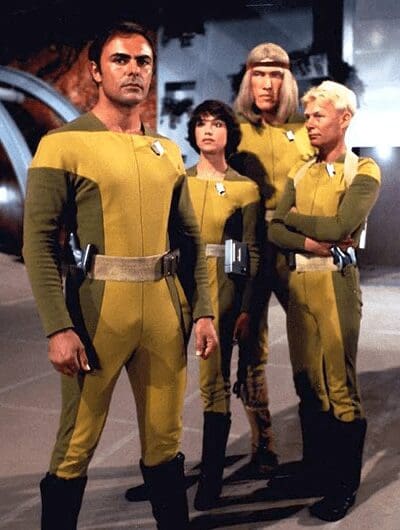
As part of the retooling, there were some cast changes from Genesis II. The Buck Rogers stand-in, Dylan Hunt, was recast, and John Saxon was now playing the scientist like Captain Kirk.
In the first iteration, Dylan Hunt was a scientist who would have been infinitely happier in a nice warm 20th-century lab than fighting for his very life a couple of centuries after his birth. Saxon’s Hunt on the other hand was a man of action who had been born in the wrong century and had finally come to the world he belonged in.
Planet Earth serves as a preview of the first season of Star Trek the Next Generation. The uniforms (see above), the art design aesthetic, the lump-head Klingons, the strident atheism, the ridiculously hypocritical nods to second-wave feminism, it’s all there!
The plot of the second pilot is “Women’s lib gone insane!” Most of the plots from this still-born series were retreads of Star Trek Episodes, although this one could be mistaken for being original if you never read any of Gor novels,
After being attacked by the Klingons the Kreeg, the PAX team stumbles upon a matriarchy where the women drug the men and keep them as slaves. Hunt is captured. After being drugged, stripped on the auction block, and generally being treated like the star of a Cosby date night, the girl on his team who secretly has the hots for him rescues Dylan and sobers him up with a magic potion she’d whipped up.
Hunt goes back to the Alpha female and gives her the Kirk treatment until her toes curl. While the rest of his team sobers up the men.
This old pilot did have an unexpected amusement value that came from reading reviews of this show by modern Gamma Males.
“’The powerful woman who just wants to be walked all over in bed’ has never been a trope I’ve bought into or experienced.”
I’m sure you haven’t cupcake. I have rarely been more certain of anything in my life.
Anyway, the Kreeg show up and slap the Alpha F1emale around for a while but then the now-cured men fight them off. The women decide to try not ruffiying their men anymore. Another win for PAX!
Planet Earth obviously failed as a pilot.
Where to watch: Either buy a streaming license from Amazon, Apple, or YouTube, or take your chances on the high seas. Since it has Roddenberry’s name on it, both are heavily policed on YouTube but you might get lucky. Earth II as a title search will be a pain to wade through because there was another pilot with that name in 1971.
5. Ark II (1976)
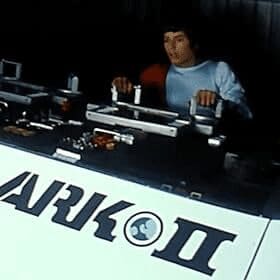
I almost didn’t include this one on the grounds that it was a kid’s show. But, it so closely fits the tropes of the Earth Trek genre that I had to tuck it in.
Ark II was another Earth Trek about getting civilization going again after the collapse of everything due to pollution and bad stuff. A 1970s-Saturday-morning-diverse team of young, uniformed scientists and their intelligent chimpanzee (because kid’s show) travel around in a mobile lab/exploration and science magic vehicle to do stuff in the Mojave desert.
And truth be said, it was the vehicles that had boys tuning in each week. No getting around it, they were 1970s cool. Our standards for cool weren’t that demanding before Star Wars came out.
The Ark itself was a fiberglass body attached to a Ford dump truck chassis. Like any seventies Ford it broke down constantly. Also, it was completely illegal to drive it on the roads. Which was a good thing because it was incredibly dangerous to drive under any circumstances or for that matter just to be around.

The Roamer was a different story. As much as the original VW Bug sucked, you could do some great things with one once you ditched the body. The Roamer was a Beetle modified with a Brubaker Box kit and I suddenly wanted one.
There were only 15 episodes made before the show was canceled.
RELATED: Jenny Slate And Michelle Williams In New Home Wrecker FX Series ‘Dying For Sex’
The Ark’s nose was sawed off and used as a prop for Space Academy, then Jason of Star Command.
Where to watch: YouTube. It’s not policed. Obviously.
4. The Starlost (1973)

This one is a not-quite Earth Trek but most of the tropes are there. The heroes get around on foot. They are wandering in something close to a post-apocalyptic environment. And there was always a problem in every community they wandered into.
What set this one apart was that it wasn’t on Earth. It took place aboard a universe ship where the population has forgotten that they are on a universe ship. The ship was used in the evacuation of the Earth. But centuries ago, there was an accident, and the senior crew was killed. The rest of the passengers descended into savagery.
The Earth trekkers were Devon the Peasant-Who-Questions-That-Which-Should-Not-Be-Questioned. His lover Rachel, Who-is-Promised-to-Wed-Garth. And Garth, the Guy-Who-Regrets-Freeing-Devon-When-He-Was-Condemned-Because-Devon-Immediately-Ran-Off-With-Rachel. The three of them discover that they are indeed on a universe ship, and more importantly, the ship is due to crash soon if there isn’t a course correction. This was why the three-man band had to move from sector to sector, week to week. They are trying to figure out how to get the ship’s course changed. Not a bad MacGuffin.
Devon was played by 2001’s Keira Dullea and his magnificent Seventies Pornstache. The other two were played by a couple of actors you never heard of but they both had solid bodies of work after this show as character actors. Walter Koenig was a recurring villain.
The premise was an interesting combination of two well-known science fiction tropes: the universe ship and Earth Trek. The execution on the other hand was so bad that its creator, Harlan Ellison, ended up demanding his name be taken off it. Which it was. The creator and writer of this show is credited as Cordwainer Bird.
The original script was titled Phoenix Without Ashes and Ellison claimed for years that it would have been the greatest science fiction show of all time if the producers had just left it alone. Color me dubious. The pilot that was shot had all of Ellison’s usual 1970s anti-Christian cliches, and so did his original script.
Its biggest problem was that Douglas Trumball was one of the Executive Producers and he had intended to shoot it using a system called MagiCam. The basic result that MagiCam was trying to deliver would be kinda-sorta comparable to what Jon Favreau would eventually do with his Virtual Sound Stage. But MagiCam was too ambitious for an analog world. It failed. A simple green screen had to be used. The budgets were slashed to the bone and Ellison started bitching to anyone who would listen that his brilliant ideas were being gutted.
Starlost ended after 17 episodes and was never heard from again except when Ellison was spouting off about it.
Where to watch: YouTube. Nobody polices it. Why would they?
3. Planet of the Apes (1974)
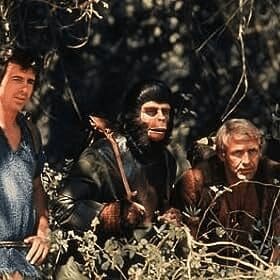
Planet of the Apes was a decent science fiction movie with a good twist ending. It did not deserve four sequels, but it got them anyway.
The returns had been diminishing with each film. The box office from Conquest of the Planet of the Apes had been weak but good enough that there was some debate at the studio about a sixth movie. But then something odd happened.
ABC owned the broadcast rights to the Planet of the Apes movies, after the first showing they didn’t do much in the primetime ratings. But then the affiliates started showing them in the afternoon, in sequence, during sweeps months, calling it the “Going Ape Week.” The after-school ratings were huge. Hell, I can even remember the commercials for it, they would show a montage while playing Yes, We Have No Bananas.
Consequently, ABC asked the studio, ‘How about a series?’
They shrugged and said, “Sure. Less risk for us than another movie given that you have to buy it.”
You would have thought that Roddy McDowell had had enough of spending hours in the makeup chair, but he lobbied hard to retain his part. Apparently, he had come to view Cornelius as his signature role, and come to think of it, he’s not wrong.
It was kind of a demi-sequel to the first movie. Doctor Zeus was back, and he made specific mention of previous astronauts. For obvious reasons, they couldn’t reference Beneath the Planet of the Apes. Also, the humans were intelligent although still oppressed by the monkeys.
The Earth Trekkers were the two astronauts plus Cornelius.
The ratings were okay but the makeup costs using mid-1970s techniques were budget-busting, and that defeats the whole point of an Earth Trek show. The scripts, frankly, were bad. ABC’s network policy literally pushed hard for no intellectual engagement. They wanted everything dumbed down as much as possible. With no reason to watch, no one did. The series was canceled after one season.
RELATED: LeVar Burton Learns He Comes From White Confederate Stock On PBS ‘Finding Your Roots’
It says just about everything about this show that the cartoon series was actually better.
Where to watch: YouTube. It’s not policed either.
2. The Fantastic Journey (1977)
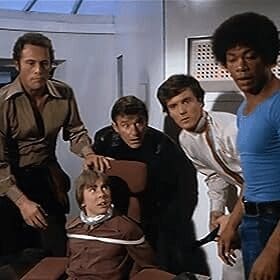
D. C. Fontana was the producer and showrunner. It definitely had the Star Trek vibe throughout.
The pilot starts off with Flight 19 vanishing. Okay, given the era, it set the tone effectively. Then, a present-day (meaning the mid-seventies) “scientific expedition” to the Bermuda Triangle sets off. I’m not sure what they were trying to “science,” but I suppose it wasn’t difficult to get funding for anything with “Bermuda Triangle” in the grant proposal in the mid-seventies. Good for them!
The show started off with scientist-man father, his son who had been in a bunch of Disney flicks, a black doctor, and The Woman. So, it was seventies-diverse. By the end of the pilot, scientist-man father was out of the show. Understandable, he didn’t serve much of a purpose once Future Man: Varien was introduced. Varien was super smart and could “sense things.” He also had a glowing tuning fork that did whatever the plot needed it to. Basically, a sonic screwdriver that looked like it had actual sonic capabilities. The Woman was replaced by a hotter The Woman who was the daughter of an alien and an Atlantean.Pity I couldn’t find a better picture
Roddy McDowall was introduced as another scientist from the 1960s. His job was to chew the scenery and he was happy to do so.
The team would reach some portal location and be beamed into a zone where they would have that week’s adventure. At the end of the episode would be beamed out when they reached the next portal. They were looking for the one that would take them home. As I said, it was basically Earth Trek.
It really wasn’t bad as these things go. It had room for improvement to be sure but it was trying to improve. However, it had two very big problems. It was in a suicide timeslot sandwiched between the Waltons and Welcome Back Kotter. And it was also frequently preempted. Again, that was ratings death.
RELATED: DC Animated Projects Might Be Getting The Axe As Warner Bros. Restructuring Continues
Where to watch: You can buy a license from Amazon, YouTube or Apple. Also, free with commercials on Tubi.
Final Note: The production, minus the cast, reassembled the next year for the TV version of Logan’s Run. Which brings us to our number one with a bullet.
1. Logan’s Run (1978)
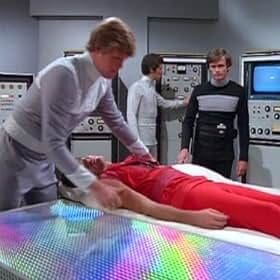
The character of Logan 5 in the film version is kind of subtle.
Yes, he’s got questions and he isn’t too sure about some of the things he’s been told. But when you look at his actions for the most part you can’t be sure that he’s actually a Runner until he gets outside the City. His orders were to pretend he was a Runner and infiltrate the Runner’s Underground with a view to destroying it, and most of what he does aligns with that objective. His getting Jessica to trust him, his killing the Doctor, and finally, when he does meet the Runner’s Underground, sending up a flare to the other Sandmen who wipe them out, these are all the actions of a double agent. Admittedly, one who is losing track of whose side he is really on. Sure, you can argue self-defense for the people he killed, but you don’t know for sure what his real motives are. Now his character clearly has undergone a change when he goes back to City to try and tell everyone the truth about Outside. But you aren’t too sure about him before then.
Logan 5’s character is, for the most part, kind of subtle.
The TV show, not so much. He clearly makes up his mind within the first five minutes. Although, there were definitely some things that were different. Logan and Jessica were in love in the movie and things couldn’t have been more platonic in the series. Hell, if this thing hadn’t taken place in the 1980s you’d think he was more interested in Francis.
The other big difference is that in the movie the City was controlled by an AI, in the series it was run by a secret council of Elders. The existence of this council raises a lot of questions. While the AI’s solution to the problem of an enclosed ecology was unquestionably extreme, it was dealing with extreme circumstances after WWIII. You kind of get the feeling it was in HAL’s position. It was obeying the last orders it was given to the best of its ability. You could even make the argument that as bad as Carousel and the Sandmen were, they might have been necessary right after the war. Obviously, they no longer were by the time Logan ran.
Which raises some pretty big questions about the Council of Elders. The biggest being why were they still killing everyone on their 30th birthday rather than try re-colonizing the Earth?
As an Earth Trek, Logan’s Run was a little unusual in that there was a reason he had to keep running. He was being relentlessly pursued by Francis and a team of Sandmen.
Nothing came of it. Nobody was doing anything like that back then. Everything had to be reset at the end of the episode so that nothing changed, and nothing would change.
Initial ratings were good but it was in a time slot that… You guessed it… Got a lot of preemptions during football season.
Where to watch: You can buy a license from Amazon, YouTube or Apple.
The Earth Trek genre came grinding to a halt when the Eighties arrived.
Times were changing, Star Wars had easily surpassed Star Trek as a pop culture icon. So, it made more sense to make rip-offs of that instead of Star Trek. A few series would revisit Earth Trek from time to time, but it was pretty rare. Otherworld had a lot of the tropes of that genre, but it was a lot closer to alternate history.
Sliders was close but no cigar. It was too much its own thing and frankly became too much of a bad thing.
Earth Trek was ultimately a product of its time. It was limited by budget constraints and more importantly the minds of TV executives. It failed as a genre because they wouldn’t let it become what it could have been. Which is why no one misses these shows. Kind of a shame.
How do these Television shows of the 70s strike you? Do you have any interest in checking any of them out? Do you remember them? Leave us a comment!

Leave a Reply